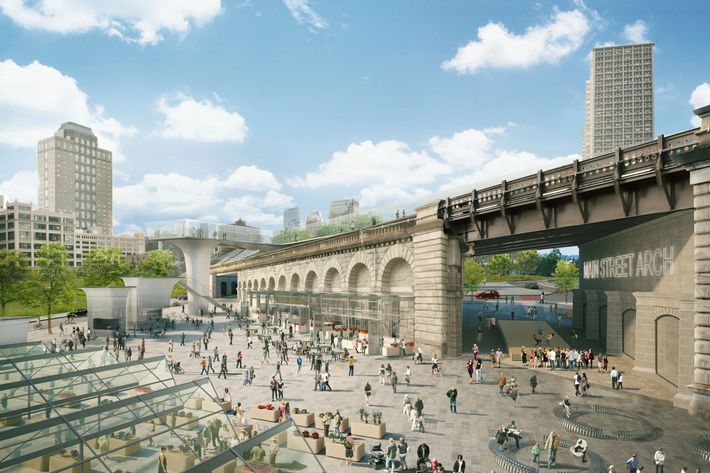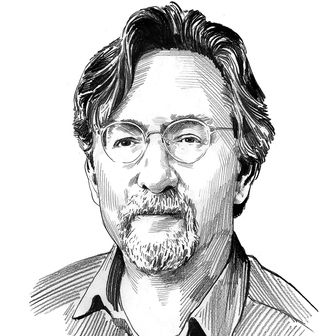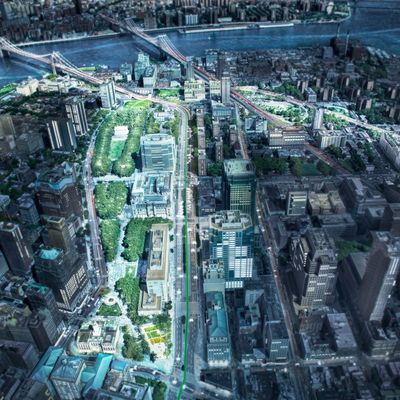
If you’re not quite clear on what it means to optimize a city for drivers and neglect everybody else, consider this: Thousands walk or bike across the Brooklyn Bridge each day, spilling into a frightening snarl of highway-gauge streets and emission-hazed traffic. Or this: Just try strolling from LIU to Brooklyn Bridge Park without taking any of several potentially lethal arteries. Any half-mile stretch from Downtown Brooklyn to the water’s edge feels like a trek if you’re on foot, and a steeplechase if you’re on a bike. What greenery there is has the quality of an improbable relic. Few people even know that the scruffy patch of foliage beneath the BQE’s crisscrossing ramps is called Trinity Park.
But what if you could undo at least some of that misery? The BQE’s not going anywhere, but say you called in earthmovers, shoved a couple of highway exits this way or that, tore down fences, and put in bike lanes and pavers and benches and food stalls and lights? Could you cure the area of its automobilitis? Now the de Blasio administration and the Downtown Brooklyn Partnership finally have a plan — or at least the beginnings of a plan — to do just that.
Years of public kvetching and suggestions, multilateral negotiations among various city agencies, and patient design work by Claire Weisz, a partner at the civic-minded architecture firm WXY, have yielded a project called the Brooklyn Strand. It’s a constellation of projects, actually, with fixes ranging from tiny to blue-sky. A handful of workers could pull out the fences enclosing a pocket park and repaint the crosswalk in a day or two, at little cost. Constructing a landscaped sky plaza with elevator access to the Brooklyn Bridge — that’s a different story.
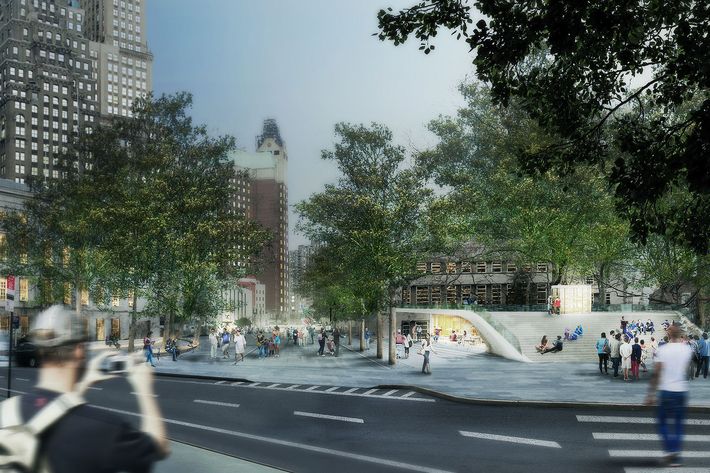
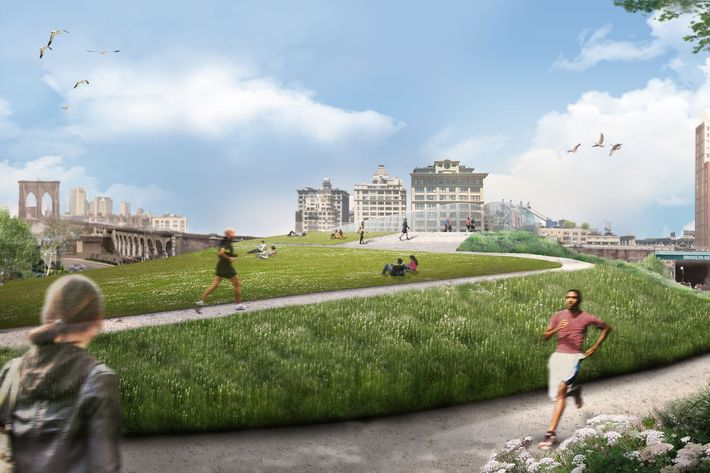
Skeptics will note that the Brooklyn Strand report says nothing about how long it would take to execute or how much it might cost. They might point out that in spring and summer Columbus Park, in front of Borough Hall, is not actually the sad, vacant space that the wintry before photo makes it out to be — or that covering the judges’ parking lot with a sleek glass-walled pavilion might actually do little to improve the park experience. Those same jaundiced observers might point out that officials faced with moving a highway ramp typically spend a couple of decades analyzing the idea, before forgetting about it completely. A true cynic could even conclude that the plan’s real aim is to uncover a few city-owned parcels that can be tossed to land-hungry developers.
But mixed in with all of these doubts lurks a genuinely exciting prospect of returning public space to the public. The plan stitches together a whole range of hyperlocal desires (my kids can’t cross the street here!) with large-scale civic interests. It can be carried out piecemeal, but its effects will multiply over time. If walking from one place to the other suddenly seemed like a sensible thing to do, companies confined to Dumbo could expand into Downtown Brooklyn, the border between affluent and low-income areas would grow more permeable, and navigating great floods of traffic would become a less necessary evil of Brooklyn life. New York is a city of interlocking property lines and minute jurisdictions, where one department doesn’t always know what another is doing on adjacent squares of asphalt. That’s exactly why we need the rare kind of linked thinking that the Brooklyn Strand represents. In real life, we move in seconds from park bench to sidewalk to skyscraper, and our quality of life depends on them all.
